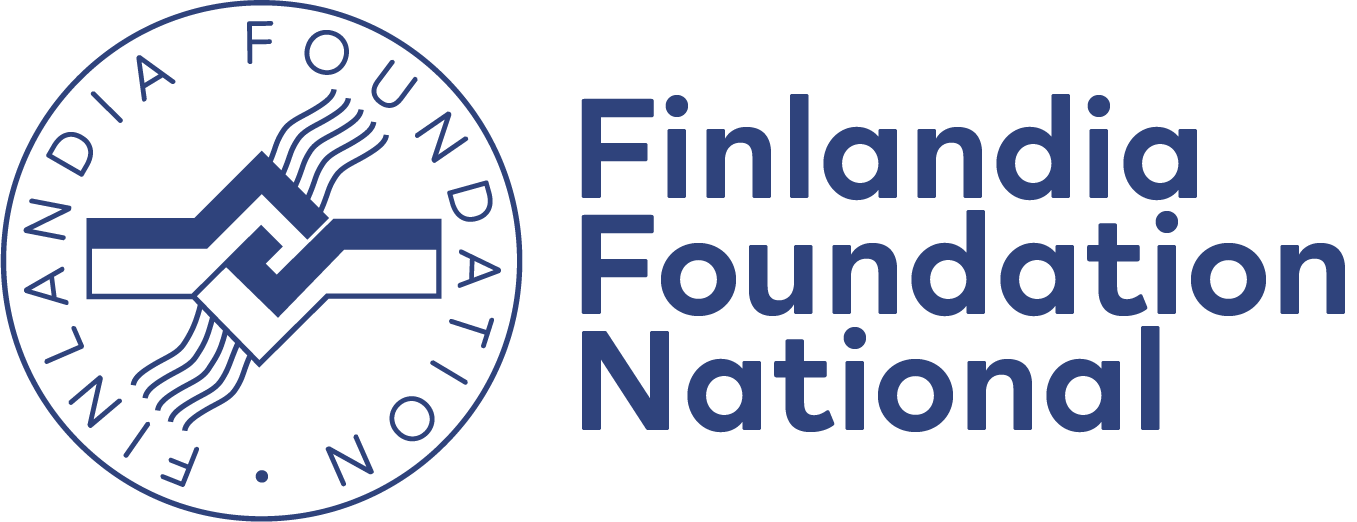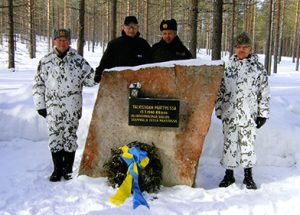The SFK Ski March of 1940
The Soviet Union attacked Finland on November 30, 1939, without declaration of war. This act of aggression shocked the world and Soviet Union was expelled from the League of Nations. The Winter War had started.
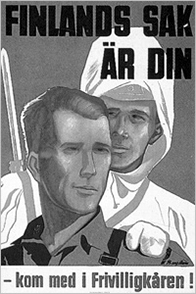 Finland, a nation of 3 1/2 million at that time, had a shortage of manpower and arms, compared with the Soviet Union, with a population of 200 million. There was a tremendous need of outside support, which could not be mobilized on short notice. Although strong sympathies were expressed, foreign governments were reluctant to be drawn into the conflict.
Finland, a nation of 3 1/2 million at that time, had a shortage of manpower and arms, compared with the Soviet Union, with a population of 200 million. There was a tremendous need of outside support, which could not be mobilized on short notice. Although strong sympathies were expressed, foreign governments were reluctant to be drawn into the conflict.
However, within three weeks of the attack, foreign volunteers began arriving to fight for Finland. A total of 11,500 volunteers from at least 12 countries traveled to Finland to help fight the Soviets. Among them were 372 Finnish Americans, 350 Hungarians, 346 Karelians and Ingrians, 230 British and 150 Italians.
However, the great majority—10,000—were from the Scandinavian countries: 9,000, were Swedes, with the balance Norwegians and Danes serving in the Swedish Volunteer Corps and the Danish Finland Corps.
In comparison, the size of the Finnish Army was 275,000 men at the start of the Winter War.
At one point during the Winter War, the Scandinavian volunteers assumed the responsibility for the air and ground defenses of all of northern Finland, the area north of Oulu. This enabled Marshal Mannerheim to move most of the Finnish troops from Lapland to the Karelian Isthmus, to help repel the major Red Army offensive in the south. The remaining Finnish troops in Salla area, 7,000 men, were integrated under the Swedish General Linder.
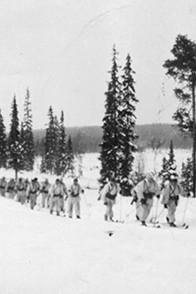 It was clear that the Soviet Union had not only planned to move the border with Finland some 25 miles to the north of St Petersburg; the Red Army had substantial troops all the way from the Arctic Sea down along the Finnish border all the way to the Gulf of Finland in the south. There were two Red Army divisions, about 25,000-30,000 men, along the Salla sector, supported by Soviet Air Force.
It was clear that the Soviet Union had not only planned to move the border with Finland some 25 miles to the north of St Petersburg; the Red Army had substantial troops all the way from the Arctic Sea down along the Finnish border all the way to the Gulf of Finland in the south. There were two Red Army divisions, about 25,000-30,000 men, along the Salla sector, supported by Soviet Air Force.
The Swedish volunteers received several weeks of training on the Finnish side and were then transported by railways to Kemijärvi east of Rovaniemi, but the rest of distance—about 80 km to the border area of Salla—was by skis. This was a tremendous undertaking physically, with numerous casualties by frostbite. The temperatures in January 1940 were -40 F. The Swedish troops were well-equipped except for the lack of heavily winterized boots, which they eventually received.
Some of these volunteer units suffered heavy losses, especially in the Continuation War of 1941-44. For example, 100% of the Danish pilots were either killed or badly injured. A Swedish unit suffered 73% casualties in the decisive Tali-Ihantala battle.
These men fought for the freedom of Finland being fully aware of the odds they were facing. As they were issued uniforms, many gave their civilian clothing to Finnish refugees at the Swedish border. Before they left Finland, they donated much of their pay to Finnish refugees from Salmijarvi.
At the end of the Winter War, Marshal Mannerheim traveled to Salla to personally thank the SFK volunteers for their efforts on behalf of Finland.
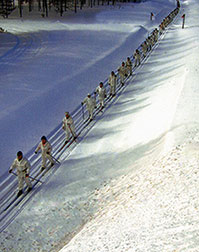 The SFK Memorial Ski March follows the trail of the 1940 volunteers, passing many memorials than have been erected along the way. Finnish active troops stationed in Lapland have joined the SFK ski troops for this commemorative event.
The SFK Memorial Ski March follows the trail of the 1940 volunteers, passing many memorials than have been erected along the way. Finnish active troops stationed in Lapland have joined the SFK ski troops for this commemorative event.
